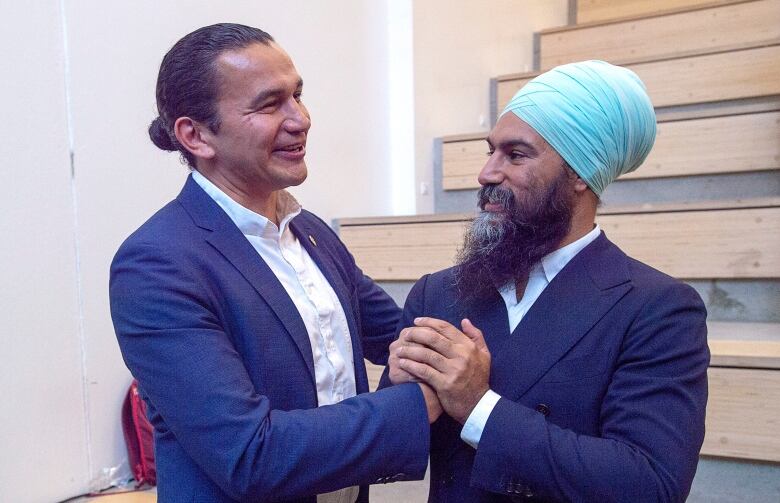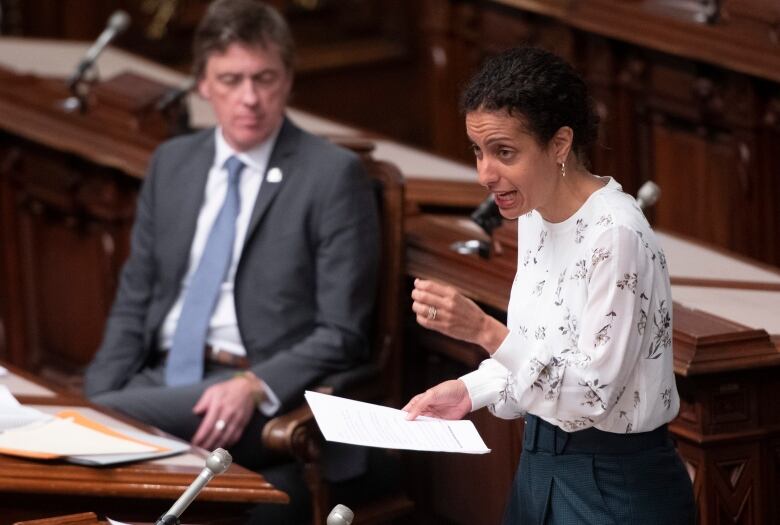When it comes to leadership, Canada's political parties aren't getting more diverse
The people the parties choose as leaders still don't look much like the electorates they want to lead

Political parties in Canada have a long way to go before their leaders begin to resemble the electoratesthey seek to lead.
Throughout Canadian history, almost all of the people chosen to lead provincial and federal parties have been white men. Even in more recent years, however,the leadership ofpolitical parties has failed to reflectthe gender and racial diversity of the wider population and parties don't seem to begetting any better at it.
Winning a party leadership is no easy thing. Those who do usually have a few things working in their favour.
They are politically active, inside or outside of their parties.They have teams around them that supporttheir leadership bids. They're able to convince party members that they are the best people to speak for their parties and that they have the so-called "electability" factor.
Studies show, however,that systemic obstacles prevent women and people of colour from getting involved in politics in the first place. For them, risingto the party leadership usually means overcoming obstacles and prejudices that whitemale candidates don't face.
An analysis of data from the last few decades shows the result and it isn't pretty.
Since 1990, 175 leaders of provincial or federal parties have either led a partyinto an election in which it won seats, or(in the case of a shut-out)led into an election a party that had won seats in the previous vote. (This analysis has excluded territorial leaders, interim leaders or leaders of parties that did not win seats in an election.)
Only 18 per cent of these leaders were women. Just eight per cent were people of colour.
According to the 2016 census, 51 per cent of Canadians are women and about 27 per cent either self-identified as Indigenous or asvisible minority.

Women began winning party leaderships in bigger numbers in the early 1990s. Rita Johnston, named leader of the British Columbia Social Credit Party in 1991, became Canada's first female premier. Kim Campbell, who won the federal Progressive Conservative leadership in 1993, became Canada's first andonlyfemale prime minister to date.
About 23 per cent of party leaderships decided between 1990 and 1994 ended with women being chosen. That percentagewas cut nearly in half in the late 1990s and dropped even further in the early 2000s. Between 2005 and 2009, however, just over one-third of party leadership races were won by women.
That share decreased again in the 2010s. Since 2015, only one in ten newly-named party leaders have been women.
No racialized Canadian won a major party leadership in the 1990s. That changed at the turn of the century but the trend line has been largelystable since then: people of colourhave won about 13 per cent of leadership contests over the last 20 years.
New Democrats have the most diversity
The New Democrats have chosen a higher percentage of women or people of colour as party leadersthanthe Liberals or the various conservative parties across the country.
Since 1990, 16 per cent of NDP leaderships at the federal and provincial levels have been won by racialized Canadians current federal NDPLeaderJagmeet Singh is one of them. Just over 12 per cent of Liberal leaderships have been won by people of colour since 1990, while the Conservatives (of all stripes) have not elected any over that period.
Women have won about 29 per cent of NDP leadership races, compared to about 15 per cent for both the Liberals and Conservatives.

Proximity to power might have an impact on the chances of a white man winning a party leadership. Justabout half of Canada'sracializedor femaleparty leaderstook over their parties at timeswhen they wereeither in power or serving asthe Official Opposition; nearly two-thirds of male party leadersdid the same.
There isn't muchregional disparity involved in this pattern, either. The number of leadership races won by women over the last 30 years ranged fromseven per cent of the total in Nova Scotia to 27 per cent in British Columbia, but the sample size in each province is relatively small.
Regionally, western and central Canada had similar rates of racial and gender diversity among their party leaders, while Atlantic Canada's party leadershipwas moremale and white. Atlantic Canada, however, is also the least racially diverse region in the country.
Diversity today no higher than before
The current roster of party leaders is not particularly diverse. Every provincial government is led by a white male. (Caroline Cochrane, premier of the Northwest Territories, is Mtis and Nunavut Premier Joe Savikataaq is Inuit).Back in 2013, six provincial premiers andone territorial premierwere women.
About 11 per cent of the current party leaders (including a handful of interim leaders)are non-white Canadians, and two of them are one step away from power. Manitoba NDP Leader Wab Kinew and newly-named Quebec Liberal Leader Dominique Anglade occupy the Official Opposition roles in their respective legislatures.
Just 16 per cent of current provincial or federal party leaders are women and none of them is in a position of power right now.Ontario NDP Leader Andrea Horwath and Alberta NDP Leader Rachel Notley are the oppositionleaders in their provinces (as is Anglade). Manon Mass of Qubec Solidaire, Alison Coffin of the Newfoundland and Labrador NDP and interim federal Green Leader Jo-Ann Roberts lead parties currentlyinthird place or lower in their respective legislatures.

Therepresentation of people of colour and women among party leaders is even lowerthan it is among MPs in the House of Commons which itself is well below the national average. Only 29 per cent of MPs are women and about 18 per cent are people of colour.
There is some diversity in the leadership races being held across the country right now. The federal Green leadership is very diverse and both declared candidates for the B.C. Green title are women. One of four candidates for the Conservative leadership is a Black woman, Leslyn Lewis.
But the front-runners in that race (based on fundraising, polls and endorsements) are two white men Peter MacKay and Erin O'Toole as are both candidates for the leadership of the Newfoundland and Labrador Liberal Party and nearly all of the candidates running for the leadership of theParti Qubcois.
Putting aside the question of whether our representative democracy is actually representative of the people within it, there are good reasons to want to see more diversity in our political leadership. Studies have shown that businesses with more diverse leaders have better outcomes. Perhaps the same could be said of Canadian politics.













_(720p).jpg)


 OFFICIAL HD MUSIC VIDEO.jpg)
.jpg)



























































































